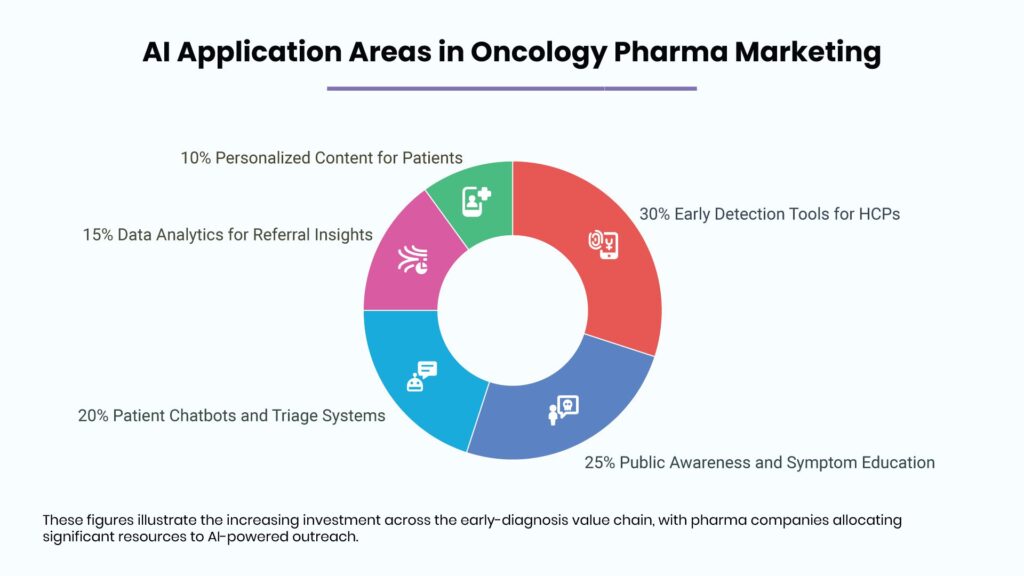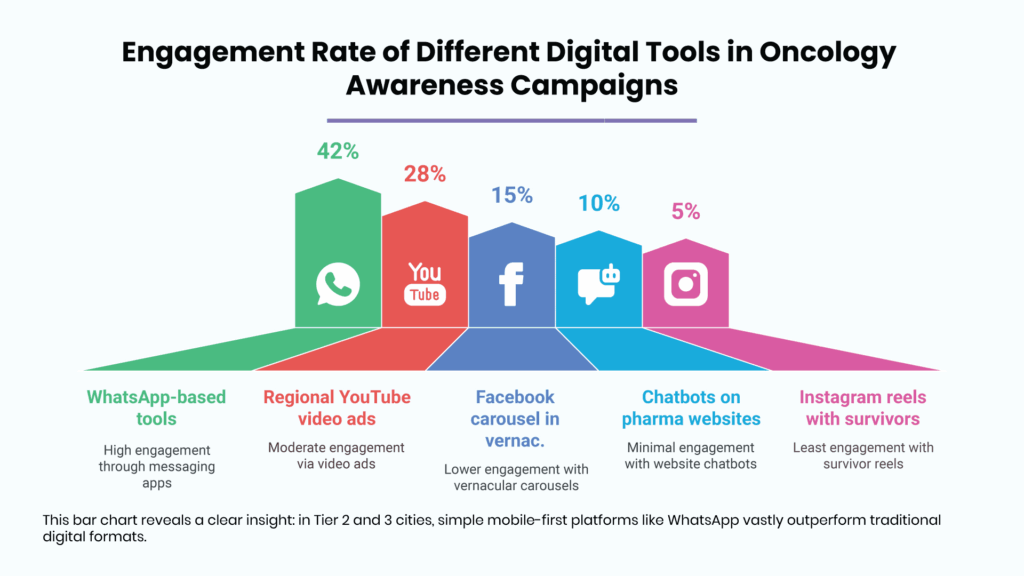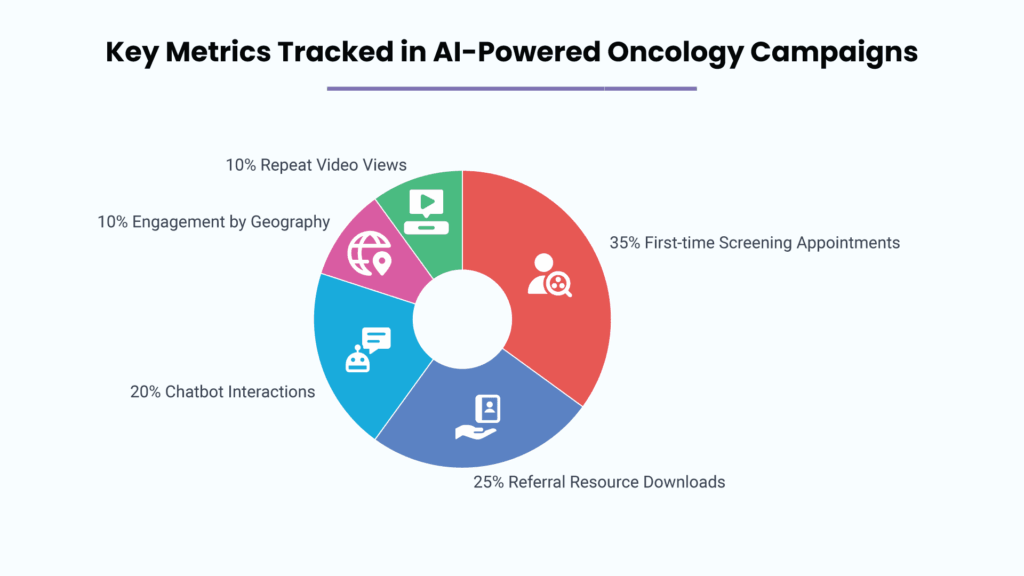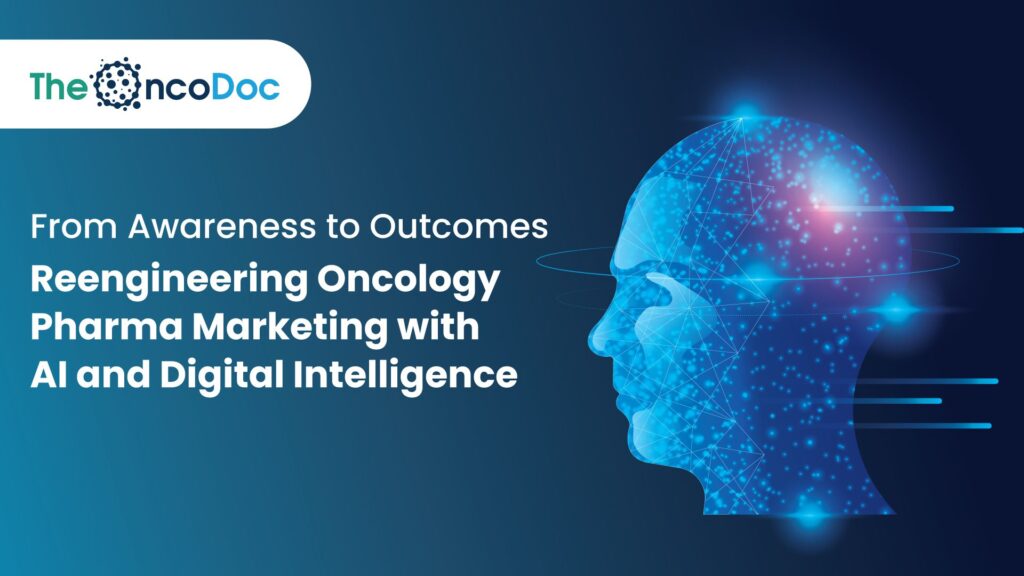Introduction: Marketing with a Mission in Modern Oncology
Pharmaceutical marketing in oncology is undergoing a significant and necessary transformation. Traditionally focused on promoting drugs to oncologists through clinical data and product messaging, the field is now being redefined by a broader, more impactful purpose: saving lives through earlier intervention and smarter engagement.
This shift is particularly urgent in countries like India, where cancer outcomes are often compromised by late-stage diagnosis. With over 70% of cases detected at advanced stages, the role of marketing has expanded far beyond product promotion. It now encompasses public health education, early symptom recognition, and the empowerment of primary care physicians (PCPs) to refer at-risk patients more swiftly.
Driving this transformation is the growing influence of artificial intelligence (AI) and digital connectivity. These tools are transforming how pharma companies understand, reach, and influence stakeholders, not just oncologists, but general practitioners, community health workers, patients, and even caregivers. Instead of waiting for patients to reach oncology clinics, forward-thinking marketers are leveraging AI to identify high-risk populations, customize awareness efforts, and guide people earlier in their care journey.
This new marketing paradigm is proactive rather than reactive. AI-driven analytics can predict areas with low screening rates or delayed referrals and deploy targeted interventions, be it a regional language awareness video, a WhatsApp chatbot for symptom triage, or a microlearning module for healthcare providers. In doing so, pharma companies shift from being sellers of solutions to enablers of outcomes.
The change is not just technological, it’s philosophical. Oncology marketers today are recognizing that commercial success can align with clinical impact. By investing in early detection campaigns and digital education tools, they are not only building brand equity but also contributing to systemic improvements in cancer care.
Importantly, this approach demands empathy and precision. It requires understanding the unique challenges faced by different regions and patient segments, particularly in Tier 2 and 3 cities, where internet access is mobile-first and public awareness of cancer symptoms is minimal. It calls for localized content, inclusive storytelling, and culturally sensitive strategies that resonate with both patients and practitioners.
Moreover, marketing success is no longer measured only in prescriptions or market share. It is increasingly being defined by behavioral outcomes: increased symptom awareness, earlier diagnostic testing, improved referral patterns, and engagement with digital tools. These new success metrics are better aligned with long-term impact.
In summary, oncology pharma marketing is evolving into a purpose-driven discipline, powered by AI and digital innovation. It no longer begins at the point of care, it starts with the first sign, the first search, the first question. And when done right, it doesn’t just lead to a product, it leads to better outcomes.
Section 1: Rewriting the Diagnostic Journey with AI
Targeting the ‘Invisible Frontline’ – General Physicians and Mid-Tier Hospitals
Most cancer patients don’t begin their journey in oncology clinics, they start with general physicians, gynecologists, or ENT specialists. These early-stage interactions often define whether diagnosis is early or tragically delayed.
AI-powered Clinical Decision Support Systems (CDSS) can help HCPs identify atypical symptom clusters and nudge timely referrals. Pharma marketers can position themselves not as drug sellers, but as enablers of earlier, smarter care.
Tactics:
- AI-based symptom libraries integrated into popular EMRs used in semi-urban clinics
- NLP chatbots for physicians to cross-check red-flag symptoms
- Push-based WhatsApp campaigns for GPs on regional referral trends

These figures illustrate the increasing investment across the early-diagnosis value chain, with pharma companies allocating significant resources to AI-powered outreach.
Section 2: Precision Outreach – From Mass Media to Micro-Targeting
Hyperlocal Awareness in High-Risk Geographies
Cancer is not a uniformly distributed disease. Certain districts, communities, and occupational groups carry disproportionately high risk, yet often remain underserved by generic awareness campaigns. Artificial intelligence is revolutionizing this space by enabling hyperlocal, micro-targeted outreach based on real-world data.
Using tools like Google Trends, GIS-tagged epidemiological data, and regional cancer registry insights, pharma marketers can precisely identify high-incidence zones and customize interventions accordingly.
Example 1: Cervical Cancer Awareness in Bihar and Jharkhand
In regions like Gaya (Bihar) and Ranchi (Jharkhand), where cervical cancer rates are among the highest in India, AI has identified trends indicating delayed diagnoses and low uptake of the HPV vaccine. In response, pharmaceutical companies initiated localized YouTube campaigns in regional languages to explain early symptoms like abnormal discharge and bleeding, while also clarifying misconceptions around HPV vaccination. These videos were promoted during peak internet usage hours and featured local community health workers to increase credibility.
Example 2: Lung Cancer Risk Messaging in North Maharashtra
In districts such as Dhule and Jalgaon, where tobacco use among males aged 40+ is significantly above the national average, AI-enabled analysis triggered a Facebook ad campaign. These ads served lung cancer screening reminders, using regional dialect and visuals aligned with local cultural cues. The campaign also included testimonial reels from local survivors who shared their journey from symptom neglect to early intervention.
These initiatives go beyond generic health messaging. By collaborating with local influencers, be it a village ASHA worker, a regional YouTuber, or a district-level oncologist, marketers add a human dimension to digital content.
This precision-driven outreach ensures oncology awareness doesn’t just go wide, it goes deep, driving meaningful engagement in the very communities that need it most.
Section 3: Creating “Digital Clinics” for the Pre-Diagnosed
The Role of Conversational AI and Guided Tools
A large number of potential patients experience symptoms but don’t act, either due to fear, ignorance, or logistic hurdles. This is where conversational AI platforms, including vernacular chatbots and WhatsApp-based screening assistants, can play a crucial role.
Pharma companies can deploy AI-powered symptom navigators that ask users simple, non-threatening questions and direct them to the nearest diagnostic center or suggest visiting a physician.
Key Functionalities:
- Risk-based triage using WHO-backed symptom algorithms
- Integration with Google Maps for diagnostic center locations
- Instant scheduling of teleconsults with pre-authorized GP partners

This bar chart reveals a clear insight: in Tier 2 and 3 cities, simple mobile-first platforms like WhatsApp vastly outperform traditional digital formats.
Section 4: Empowering Oncologists as Educators
From Key Opinion Leaders to Awareness Champions
Traditionally, oncologists have played a downstream role in the cancer care continuum, stepping in once diagnosis is confirmed and treatment begins. However, their credibility and clinical authority position them as powerful educators in the broader cancer awareness ecosystem. With the right digital enablement, oncologists can evolve from being just Key Opinion Leaders (KOLs) to becoming true Awareness Champions.
Pharma companies can empower oncologists with curated, culturally sensitive digital toolkits that extend their reach beyond hospital walls and into communities. These toolkits serve a dual purpose: simplifying complex information for lay audiences and amplifying early detection messages where they’re needed most.
Examples of Digital Toolkit Components:
- Vernacular Slide Decks: Customizable presentations in regional languages that oncologists can use for community awareness talks at local schools, temples, or health camps. These decks can address common myths, highlight early symptoms, and provide prevention tips tailored to local epidemiology.
- Symptom Infographics Integrated into E-prescription Software: When a patient visits a clinic, oncologists can share printed or digital infographics embedded directly into their prescription printouts. These visuals, such as signs of oral or cervical cancer, act as subtle yet effective educational prompts.
· Interactive QR Posters in Clinics: Place straightforward posters in general practitioner and oncology clinic waiting areas featuring QR codes that patients can scan to access short, informative videos. These can cover topics like when to see a specialist, how to perform self-checks, or understanding biopsy results.
In addition to patient-facing materials, pharma can support peer education by organizing oncologist-led webinars for general practitioners (GPs). These sessions can demystify referral criteria, highlight red-flag symptoms, and foster a two-way dialogue that builds trust between specialists and frontline providers.
By expanding their role into public education, oncologists can help bridge one of the most persistent gaps in oncology care, delayed diagnosis due to poor awareness. Digital tools, when thoughtfully designed and locally adapted, allow oncologists to wear a second hat: not just as healers, but as health advocates leading the charge against misinformation and silence.
Section 5: Closing the Loop – From Clicks to Clinics
Measuring What Matters: Analytics for Behavioral Impact
Digital success in pharma is not about impressions, it’s about actions. To assess the effectiveness of early detection campaigns, pharma companies must measure metrics beyond CTR (click-through rate).
Key Metrics:
- Increase in first-time screening appointments
- Number of downloads for referral decision trees
- Geographic growth in e-consult requests from GP clinics
- Heatmaps of symptom search volumes over time

Tracking these metrics over time helps pharma teams iterate campaigns based on evidence, not assumptions.
Section 6: Case Snapshot – Cervical Cancer Screening in Tamil Nadu
Objective: Improve early detection of cervical cancer in semi-rural Tamil Nadu.
Approach:
- Distributed WhatsApp messages to 10,000+ ASHA workers with video explainers in Tamil
- Facebook ad campaign targeting women aged 30-55 with reminders for Pap tests
- Telehealth partnership with local gynecologists offering free 5-minute consults
Outcomes:
- 2 lakh video views within 15 days
- 8,000+ women registered for free screenings
- 72% of women said they learned about symptoms for the first time
This campaign demonstrated the power of combining AI-driven targeting with ground-level partnerships.
Section 7: Ethical Marketing and Policy Integration
Responsible AI and Inclusive Messaging
As AI becomes central to oncology pharma marketing, its use must be governed by principles of responsibility, transparency, and cultural sensitivity. While advanced analytics enable highly personalized outreach, they also introduce risks, such as reinforcing existing biases, triggering unnecessary anxiety, or unintentionally excluding vulnerable populations.
To navigate these challenges, pharma marketers must commit to ethical AI deployment and regulatory alignment. Data collection practices should be transparent, consent-driven, and anonymized where necessary. Messaging must focus on empowerment, not fear, and avoid exploiting emotional vulnerabilities for engagement.
Recommended Ethical Practices:
· Forge Alliances with Official Public Health Programs: Aligning with initiatives led by recognized bodies like the Ministry of Health or NITI Aayog enhances trust and adds institutional credibility to campaigns.
- Consult Ethics Committees for AI Tools: When implementing AI-driven platforms that influence clinical pathways, like triage or symptom checkers, external ethical oversight can safeguard against unintended harm.
- Ensure Cultural and Regional Relevance: Use diverse imagery, language options, and localized storytelling to resonate with India’s multifaceted population. Messaging should reflect rural-urban disparities, gender nuances, and local health beliefs.
Equally important is integrating pharma’s digital marketing efforts with broader public health infrastructure. Collaborating with initiatives such as Ayushman Bharat, National Digital Health Mission (NDHM), or state-run Non-Communicable Disease (NCD) programs can extend the reach and sustainability of campaigns. Such synergies amplify impact by ensuring consistent messaging, reducing duplication, and fostering a shared accountability framework.
Ultimately, ethical marketing is not just about compliance, it’s about building trust. In the sensitive domain of cancer care, where every message could influence life-altering decisions, responsibility must be baked into every AI-driven strategy from the ground up.
Section 8: Future-Forward: Beyond Campaigns to Care Ecosystems
The next frontier in oncology pharma marketing isn’t just more digital, it’s more integrative.
Emerging Models:
- Diagnostic Nudges via Wearables: Integration of pharma-owned screening apps with Fitbit or Apple Health for nudge-based behavior change
- Community-Based AI Agents: Deploying AI kiosks in rural PHCs that screen users in local language and print referral slips
- Data Trust Frameworks: Collaborative platforms where pharma, hospitals, and state governments co-own anonymized behavioral data to plan resource allocation
Pharma firms that invest in building these ecosystems, not just one-off campaigns, will lead the future of patient-centered oncology marketing.
Conclusion: The New Oncology Marketer
The role of pharma marketing in oncology is no longer about downstream prescription volume alone. It is about building upstream value, through earlier detection, smarter navigation, and greater awareness.
By combining AI, hyperlocal targeting, inclusive content, and partnership-based execution, pharma marketers can shift from being product promoters to public health contributors.
In this new paradigm, success is measured not just in sales, but in stages. Earlier stages of detection, earlier stages of care, and ultimately, earlier stages of hope.
The Oncodoc team is a group of passionate healthcare and marketing professionals dedicated to delivering accurate, engaging, and impactful content. With expertise across medical research, digital strategy, and clinical communication, the team focuses on empowering healthcare professionals and patients alike. Through evidence-based insights and innovative storytelling, Hidoc aims to bridge the gap between medicine and digital engagement, promoting wellness and informed decision-making.



